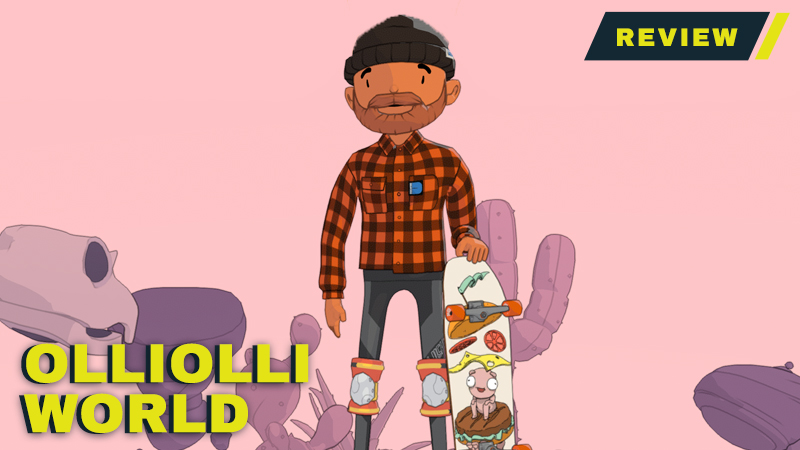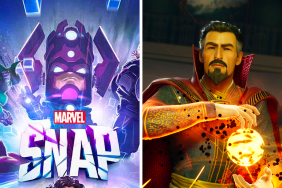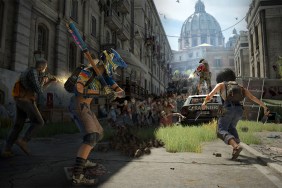Sequels can make the mistake of going bigger just for the sake of it and dilute what was already great or just surround the lean, meaty parts with unnecessary fat. But then there are sequels like OlliOlli World. This third OlliOlli game is still spiritually the same board Roll7 has been riding since its debut, but it’s been tightened, freshly painted, upgraded, and waxed to a mirror sheen, making it one of the sturdiest and pleasing decks to ride in the entire extreme sports genre.
OlliOlli World may not be as immediately recognizable before playing because of its radically different art style. While the first game went for a familiar, pixelated look and the sequel branched out to a more simplistic, cartoonish design, World takes that to the next level by adding a new dimension and covering everything with smooth, pastel colors.
RELATED: Interview: How the OlliOlli World Devs Made Their Dream Game Without Crunching
The new direction is exponentially more unique as the series finally has something that is as different as it is striking. Softer hues match the playful aesthetic that looks like it was heavily inspired by Adventure Time with a hint of Regular Show thrown in for good measure. It’s an eye-catching style that scales remarkably well between stronger hardware like the PlayStation 5 and less powerful systems like the Nintendo Switch. And while not the stars of the show, the world is alive with anthropomorphized extras that run the gamut from jacked seagulls to giant smiling trees to little green aliens that just want to dance. These creative beings culminate in each region’s deity, collectively known as the Skate Godz, all of which are eye-catching designs that give context to the five biomes and are embodiments of them.
All of these artistic choices fill out the world and make it more than just a forgettable setting to kickflip and grind through. It’s a hard turn from movie-inspired sets of OlliOlli2: Welcome to Olliwood, but a smart one that gives the whole game a more distinctive personality. This comes through in the game’s main characters, too, as they are all wholesome, encouraging beings that give a small bit of inspiration before and after a run. These interspersed words loosely assemble to form some sort of story, but they are primarily there to flesh out the world that Roll7 has taken more time building. It’s all ultimately a cosmetic change, but a type of cosmetic change that is more welcoming, imaginative, and memorable as it creates a lively backdrop for the gameplay and meshes with the chill, earworm-heavy soundtrack.
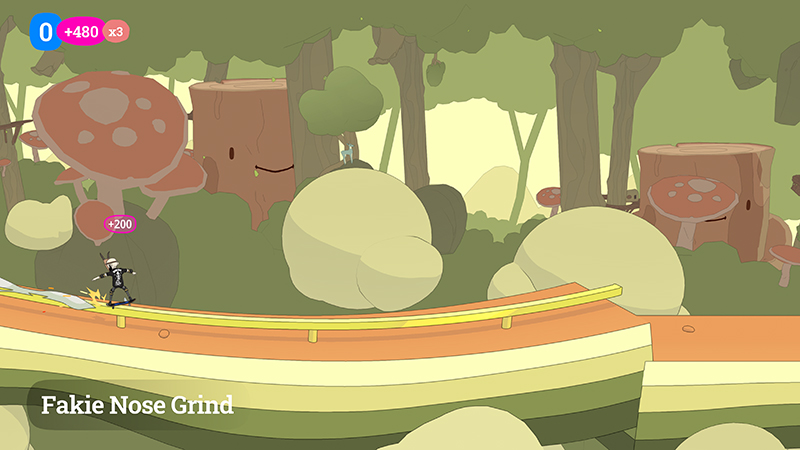
Even though that visual style is almost unrecognizable as an OlliOlii game, World’s controls are where it begins to feel like it earns its namesake. In its most basic form, World has the same controls as the first two. Tricks are dictated through doing certain movements on the stick as if it were Skate or a Street Fighter game. Timing grinds and landings leads to a better multiplier, as does learning to manual between grinds and augment every trick with a spin or two. Since it carries over those fundamentals, World feels sublime to control as it empowers players to ease into a flow state when racking up high scores.
Where World excels past the two prior games is with its combination of minute changes and more substantial additions. Landing no longer requires a button press and hitting the ground mid-spin isn’t fatal, both of which are small tweaks that make the game less punitive. Power pushing takes some of the tedium out of repeatedly pushing, while wallriding adds more traversal options and being able to firecracker down steps means that the game can still require somewhat strict timing for landing, but only in certain areas.

Roll7 is welcoming more players into OlliOlli’s world with OlliOlli World without forgetting more hardcore players, either. The new grab and tweak system is easy to perform and adds yet one more system seasoned players can use to boost their score. Grab grinds are similar in that they are not too complicated, but useful for those who want to wring every bit of score out of each rail. Late tricking is exponentially more complex and lets the most skilled skaters do another trick in midair if timed properly. It’s extremely difficult as the window on it is strict and changes depending on the length of the first trick, but it further raises the possible skill ceiling and isn’t vital to progression.
OlliOlli World’s true depth comes from how it uses its systems to appeal to both types of players. The challenges are an excellent example as each level starts out with eight: three that are for specific tasks, three based purely on score, one for completing the level, and one for completing the level without using checkpoints.
Getting to the end is all that is required and the rest is just for those who want an extra challenge and more to aim for. Both the tasks and scores are tiered, too, meaning that players can gradually build up to the hardest challenge or highest score. There are even extremely demanding Radysus challenges that unlock after rolling credits for the true masochists. This crafty approach gives players as much challenge as they want and, through escalating challenges, encourages users to gradually improve their abilities.
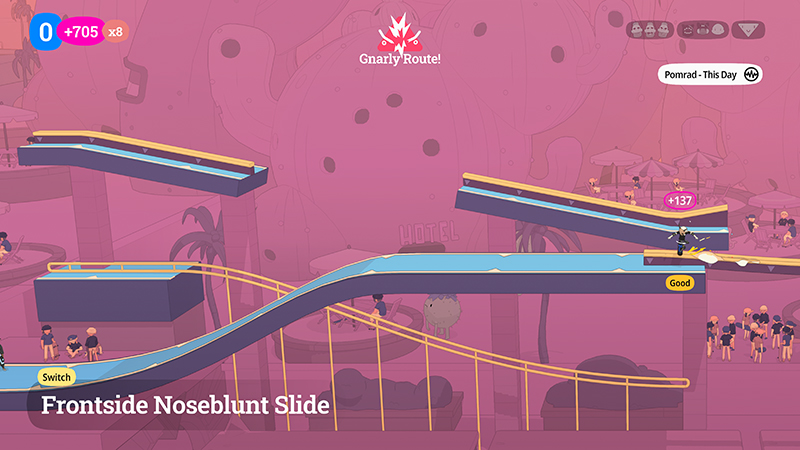
Challenges are just one more direct way it simultaneously engages with those of different skill levels. Checkpoints initially seem like a way to ease the difficulty, but they also mean levels can be longer without being tedious. Newer players can use checkpoints to inch closer to the finish line similar to a Trials game while veterans won’t want to use them because doing so means sacrificing a long combo. Customization is an outstanding way to give everyone more ways to create their own skater and serves as a fitting reward for the game’s hardest tasks.
Clearly labeled Gnarly Routes live up to their name and give serious players the same aesthetic as the normal path but through a trickier section. Wallriding and smash grabs similarly have two functions: more traversal options for everyone and alternate paths for those who want a higher score. It takes the brilliant, multilayered design of the first game and thoughtfully applies it to even more areas, resulting in a forgiving skating game that’s also hardcore and endlessly replayable.
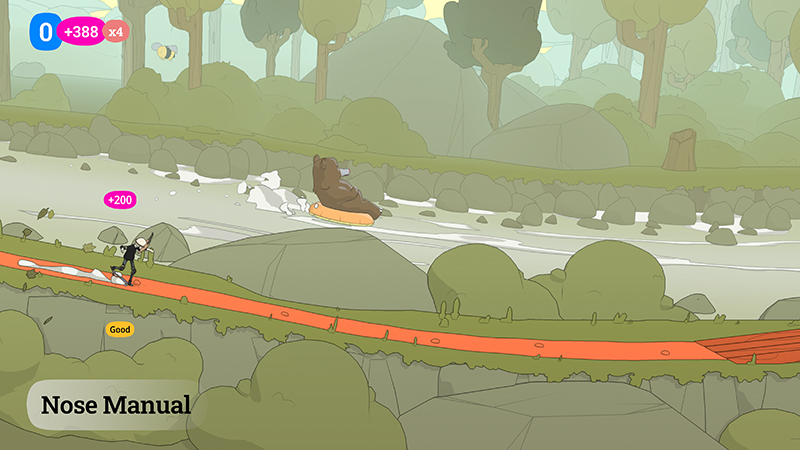
Level design is generally fantastic across the board no matter what tracks players take. Early and later levels benefit from the same vibrant, striking art style, but the last few worlds are significantly more intricate and exciting. Some crumble, loop the player around, and give them an alternate take on the same section. Others constantly make the player go from left to right and vice versa. Many contain high and low level paths and test speedy players with ramps or grind rails that are just out of reach. The camera will often zoom out and frame the track as some sort of set piece as the player barrels through, barely making each jump or grind along the way.
Side missions are atypical levels yet are still as creative. Players might be tasked with racing a bear, completing a specific list of goals in a small circular route, or having to snatch collectibles. Taking a break from score-chasing is a solid change of pace from the longer, more traditional stages. The Gnarvana Portal’s procedurally generated courses are comparatively more tame, but understandable, given how they added a near-endless amount of content to the game. Whether an optional level or one on the critical path, Roll7 has mastered level design in this third game and these sophisticated stages make up most of the best ones in the entire series.
RELATED: Interview: OlliOlli Devs Speak On New Art, Welcoming in Players, THPS1+2, and More
Although, no matter how entertaining the levels are, it can be easy to screw up and miss a jump or two, which is a prevalent issue throughout the whole game. While OlliOlli World is broadly accessible and straightforward in many aspects, it lacks feedback in key areas, mainly during wallrides and jumps. Wallrides and big ramps can either give the player barely any momentum or easily rocket them to the next platform; it’s not clear what leads to either outcome. OlliOlli2 had ramps that exploded with sparks when players perfectly propelled off them at the right time and World would benefit if its ramps and walls had a similar feedback system.
OlliOlli has grown into something truly magnificent with OlliOlli World. What began as a simplistic, pixelated skateboarding game has evolved into something far more complex and streamlined without forgetting that simplistic, pixelated skateboarding game at its core. The intuitive trick-based gameplay is endlessly satisfying and even better here as Roll7 has improved and streamlined it to cater to almost everyone. Memorable levels, a fascinating art style, a heavy customization system, and a staggering amount of replayability fortify those pristine mechanics and show that OlliOlli World is thorough and consistent with its quality, earning it its place within Gnarvana among the Skate Godz.
SCORE: 9.5/10
As ComingSoon’s review policy explains, a score of 9 equates to “Excellent.” Entertainment that reaches this level is at the top of its type. The gold standard that every creator aims to reach.
